
A Kumaoni in body and soul
Presenting the legendary hunter turned conservationist Jim Corbett who revolutionized the conservation history of India. After 74 years of leaving India, he is still remembered throughout the world for his benevolence, activism, and dedication. This is his story, through accounts of others and his own.
“If we don’t bestir ourselves now, it will be to our discredit that the fauna of our province was exterminated in our generation and under our very eyes, while we looked on and never raised a finger to prevent it”
Knowing Corbett
Jim Corbett was looked up by the people of Kumaon not only for his selfless courage and determination in tracking down man-eaters but also as a conservationist and a humble and a generous man who loved and cared for the people of the region. His passion for the forests and wildlife led him to be a pioneer photographer, filmmaker, an author of books on nature and an activist who was instrumental in the establishment of the first national park of the Indian Sub-continent. Be it his contribution to the army, settling his tenants, medical or monetary assistance to the local community, he was forthcoming in all and for this he is remembered with admiration and awe even today. He was also Honorary “Magistrate” and was accorded the “Freedom of the Forests”-a right to enter any reserved forest.
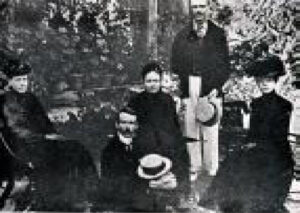
@Jim Corbett Museum, Kaladhungi, Nainital, India.
18th century

@ Jim Corbett Museum, Kaladhungi, Nainital, India.
18th century
Edward James (Jim) Corbett, the eighth child of Christopher and Mary Jane Corbett was born on 25th July 1875 in Nainital. He looked up to his eldest brother Thomas (Tom) Bartholomew, and shared a precious bond with his elder sister Margaret (Maggie) Winifred. Jim’s childhood followed the style of any European child in India. His mother Mary Jane, an ardent, pious Anglican, was a pillar of the Christian community in Nainital. His father Christopher William Corbett (1822-1881) became the postmaster of Nainital in 1878. Everyone in the family spoke at least two Indian dialects; Hindi and Kumaoni.
Jim Corbett give up hunting as a sport in 1930 he later hunted only for safety of human life and his man-eating period lasted from 1907- to 1946. He did not accept any reward for his shoots as he considered it a public service. He shot his first man-eater, the tigress of Chamapawat (Kumaon hills, Uttarakhand, India) in 1907 at the age of 31. He was rewarded with the Kaiser-i-Hind in 1928 for killing the Rudraprayag (Garhwal hills, Uttarakhand, India) man-eater which had raised questions in the British parliament after killing over twoo hundred people. They were usually named after the places they were shot. He shot his last man eater at the age of 71 in the Ladhya valley (Kumaon hills, Uttarakhand, India) in 1946. Since then he established his reputation as a slayer of man-eaters and was looked up with much respect by the people of Kumaon
Some memorbilia
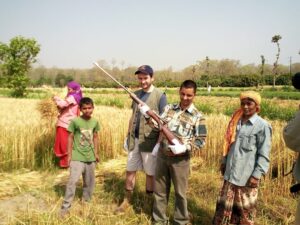
@Jim Corbett Museum, Kaladhungi, Nainital, India.
18th century.
Front load, double barrel gun (private collection)
This gun was presented by Sir J P Hewett, Governor of the United Province to Jim Corbett on his killing of the man-eaters of Champawat in1907. It was later acquired by the company from Oxford University press. In 2016 it was brought to India for display by John Rigby & Co .

@Jim Corbett Museum,Kaladhungi, Nainital, India.
Wood and canvas
6ft by 2ft
18th Century,
Dandy’s were used to carry the old and children to Nainital from Kaladhungi in the absence of vehicles and a road on the bridal path. Nainital was discovered by the British in 1839 and they spend their summers here and came up all the way from Delhi via Moradabad-Lucknow to escape the hard winters of the plains. Jim travelled up and down this path several times, often through thick jungles, just to attend meetings in Nainital, since in lived in Kaladhungi in winters.

@Jim Corbett Museum, Kaldhungi, Nainital,India
18th century
Corbett served the railways for 22 years and it was during his holidays when he came to Kumaon that he shot most of his man-eaters. These lamps which were used by the railways then were brought by him as sovernior to his house in Kaladhungi.
Corbett worked in Bihar from 1892 till 1914. At seventeen and a half years, he joined the Bengal &North-Western Railways (BNWR) as a temporary fuel inspector and was posted first to Bakhtiyarpur, Samastipur and finally to Mokama Ghat, earning one hundred rupees per month. The responsibility role for the clearance of over one thousand five hundred acres of forest affected him and deeply saddened him and set the stage for his later work as a conservationist. Along with Ram Saran, the Station Master at Mokama Ghat, he stared a school for the children of his labourers and clerks, something unheard of till then. He also freed his labourers from the moneylender’s debt with the help of a lawyer. The kindness, generosity and humanity of the ‘Sahib’ who shared his profits with his labourers and coolies are still remembered.
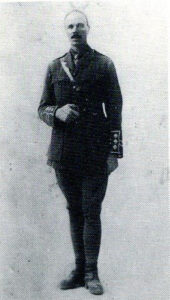
@Jim Corbett Museum, Kaladhungi, Nainital, India. Col Jim Corbett. Picture displayed at the museum. 18th Century Paper
In 1914 when the First World War broke out he offered his services to the army but was rejected. In 1917, at forty-one, he was given a wartime commission as Captain to raise the 70thKumaon Company, a force of five thousand volunteers. He also recruited a personal unit of five hundred young Kumaoni soldiers whom he led to France and later to Afghanistan in the third Anglo Afghan war.
Not once did he quit the side of his men, and they looked up to him not only as an officer but a comrade and his reputation of a fearless hunter as well as a gentleman and a lover of the Kumaoni hill folk helped him bond with his men. On his return to India, he was promoted to Major. In 1944 he was re-commissioned as a Lieutenant-Colonel and appointed a senior instructor in jungle craft. He was posted to Chindwara in the Central Provinces. After the war, he was promoted as Colonel.
He received the volunteer’s decoration in 1920 for his contribution in the First World War. In 1942, he was awarded the O.B.E. (Order of the British Empire).He also received the uncommon and seldom awarded C.I.E or Companion of the Indian Empire.
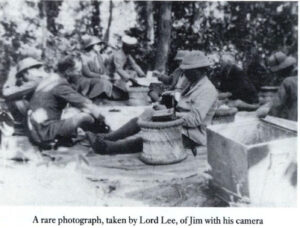
@Jim Corbett Museum, Kaladhungi, Nainital, India
18th century
Paper
Jim Corbett in his original Indian edition of ‘Man eaters of Kumaon’ mentioned that it was the photographs of F. W. Champion , a forest officer, that first inspired him to take photographs of tigers. Photography intrigued him but he did not confine himself to still shots for long. Sometime in 1928, he obtained a Bell & Howell 16mm movie camera said to have been a gift from Lord Strathcona. He was probably the first filmmaker to capture wild tigers on cine film. These cameras were driven by clockwork, cranked by hand and were very noisy. At his jungle studio, he built a machan from where he filmed animals as they came to drink water. The noise of the running water masked the sounds of the camera. If the water was not enough he supplemented it with his own bird calls and insect noises.
The highlight of his tiger calling was some amazing black-and-white footage shot in the spring of 1938, showing seven tigers, including a white one. With his films he visited schools in Nainital, hospital wards and small social gatherings to spread the first lessons in conservation. His lectures were illustrated initially with still photos and later with his movies and he called this the ‘Jungle Telegraph’.
The Story of the Corbett village
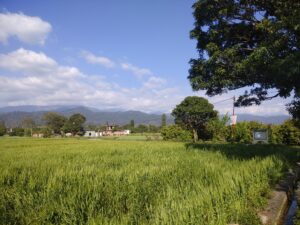
Sometime in 1915-Jim purchased the village of Chhoti Haldwani. He paid one thousand five hundred rupees for the village. This was his personal venture and he bought it for sentimental and philanthropic reasons, to uphold the family legacy of landownership and also do something for the poor people of region.
Over thirty years that Jim owned Chhoti Haldwani he encouraged the villagers to grow new crops and protected them. He encouraged the villagers to grow crops for profit and also to improve their diet, imported new banana trees from Tanganyika, along with grapevines and fruit trees. His most successful introduction was large kernelled maize from East Africa. He even tried growing coffee. When he left India he made his tenants master of their land and continued to pay their taxes from far away Africa.
Writing Career
Jim started writing in newspapers and several magazines on forests and wildlife. Later he was persuaded to pen down his jungle experiences. Never having kept a dairy or a record of his stories, he relied on what he said were metaphorical ‘photographs’ in his memory and actual ones n his album.
Oxford University press published his first book the ‘Man-Eaters of Kumaon,’ for which Sir Maurice Hallett (Governor of United Province 1939-45) wrote the introduction, Lord Linlithgow (Viceroy of India, 1936-43) the foreword and Jim an author’s note was published in 1944 in hardback and was an instant success. In 1948, ‘The man-eating Leopard of Rudraprayag’, was dedicated to the victims of the animals itself. Jim’s fourth book, ‘Jungle Lore’, appeared in October 1953. It was about life in the jungles, his own childhood, about his love for the natural world and how he came to hunt. ‘Temple Tiger’ appeared in October 1955 and the book carried his signature. In 1952 “My India” was published “in memory of the poor in India” and in response to all the letters he received form America and India. Tree Tops was published in 1955, after his death and is the only book in an African setting.
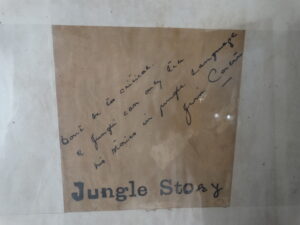
@Jim Corbett Museum, Kaladhungi, Nainital, India.
18th century
Paper
.Corbett actively championed the cause of wildlife conservation, much before such thoughts entered common parlance. Due to his sustained efforts, 323.75 sq.km area of the South Patli Dun valley, well known for its wildlife wealth was declared as a National Park in 1936. Iin 1955, it was subsequently named as ‘Corbett National. Today, Corbett Tiger Reserve which includes the Corbett National Park stands as the finest tribute to the legacy of Corbett. It holds the highest density of wild tigers globally and is also home to a large population of Asian elephants, leopards and several other species of endangered and rare flora and fauna.
His house at Kaladhungi was converted into a museum by the Forest Department in 1967. In 1968, one of the five remaining subspecies of tigers was named “Pathera Tigris Corbetti” after him. In 1975 his birth centenary was celebrated with great zeal during which a booklet and a stamp were released and public meetings to remember him were held at several places. He is represented in several folk songs of Kumaon. He even has several biographies on him, the first being printed in 1979. 1986, BBC produced a docu-drama on the life of Jim Corbett titled “Man-eater of India”. There is also an I-Max film on him titled “India-Kingdom of Tiger” made in 2002. 2019 , the forest Department of Uttarakhand produced a film made by the Bedi Brothers called ‘Corbett legacy’ which included the black and white footage of films shot by Jim Corbett.
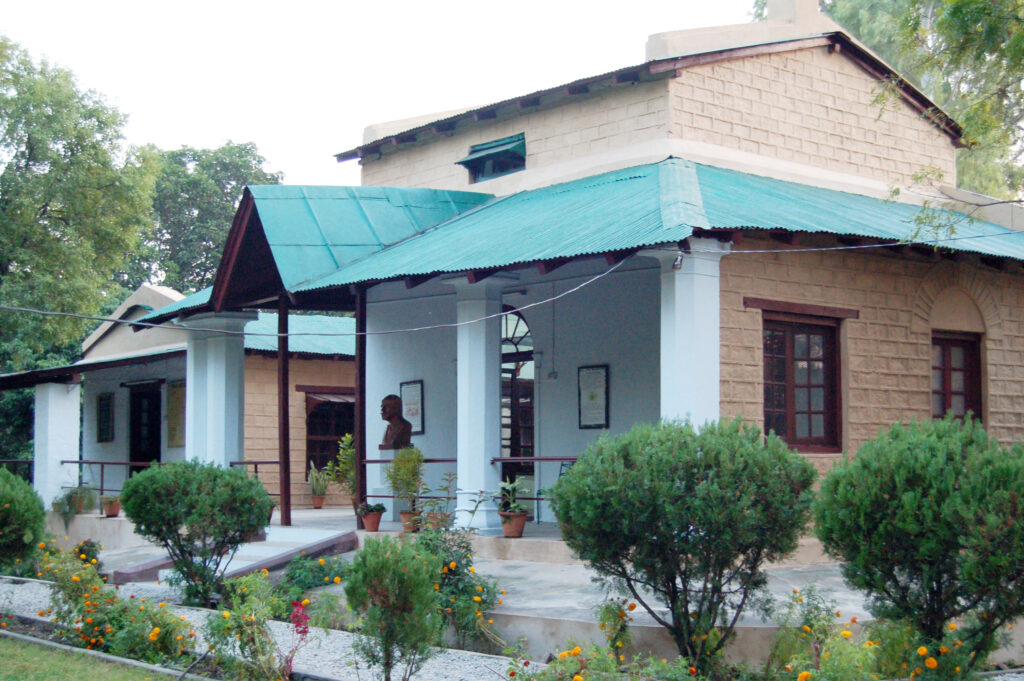

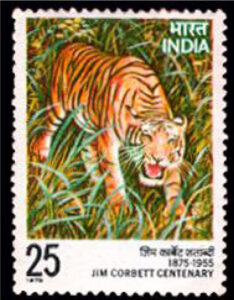


His house at Kaladhungi was converted into a museum by the Forest Department in 1967. In 1968, one of the five remaining subspecies of tigers was named “Pathera Tigris Corbetti” after him. In 1975 his birth centenary was celebrated with great zeal during which a booklet and a stamp were released and public meetings to remember him were held at several places. He is represented in several folk songs of Kumaon. He even has several biographies on him, the first being printed in 1979. 1986, BBC produced a docu-drama on the life of Jim Corbett titled “Man-eater of India”. There is also an I-Max film on him titled “India-Kingdom of Tiger” made in 2002. 2019 , the forest Department of Uttarakhand produced a film made by the Bedi Brothers called ‘Corbett legacy’ which included the black and white footage of films shot by Jim Corbett.
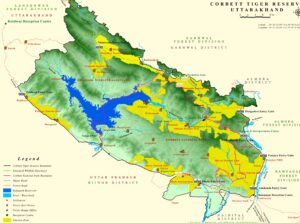
Corbett actively championed the cause of wildlife conservation, much before such thoughts entered common parlance. Due to his sustained efforts, 323.75 sq.km area of the South Patli Dun valley, well known for its wildlife wealth was declared as a National Park in 1936. Iin 1955, it was subsequently named as ‘Corbett National. Today, Corbett Tiger Reserve which includes the Corbett National Park stands as the finest tribute to the legacy of Corbett. It holds the highest density of wild tigers globally and is also home to a large population of Asian elephants, leopards and several other species of endangered and rare flora and fauna.